



News
Carbon Collectors
Bubble curtains
Floating wind
Wind statistics
Operational advice
Floating Future
Crabbing
Cover
More info
15MW wind turbine model available for projects
The 5, 10 and 15MW stock wind turbines are all available for new projects, but the design approach MARIN took can also be used to make a project specific scaled-down rotor. Alternatively, other aerodynamic modelling approaches can be taken in the basin, in which the loads are applied using either winches or small ducted fans as actuators controlled by aerodynamic BEM models.
Being involved in the floating wind sector right from the early days, MARIN has built up two decades of knowledge and is able to provide a range of comprehensive solutions for floating turbine simulation methods to support its clients.
Within this project three floating wind platforms (two different semi-submersibles and one tension-leg platform (TLP) type) were tested. During these tests, NASA’s harmonic fluid damper technology that mitigates excessive dynamic motions of the platforms was tested in the basin.
In contrast to actively controlled systems, passively controlled dynamic systems have the advantage of not requiring a constant source of energy input to operate and can be designed to impact a broad range of frequencies. The basin tests were performed for a wide range of environmental conditions and the impact on floater motions were measured. Afterwards KENT determined the impact of the dampers on the fatigue loads, which ultimately reduced the cost of the complete FOWT system.
This improved method was then used to develop a generic model-scale wind turbine based on the NREL 5MW turbine. We incorporated an active blade pitch control to test different control systems in the basin. Later a larger rotor was designed around the DTU 10MW and in 2020, MARIN went on to develop a scaled down rotor based on the NREL 15MW reference wind turbine.
Atlantis programme
The new 15MW turbine was subsequently used to test different floating wind turbine concepts as part of a project within the Atlantis programme funded by the U.S. Department of Energy’s Advanced Research Projects Agency–Energy (ARPA-E). The consortium comprised KENT, the National Renewable Energy Laboratory (NREL), National Aeronautics and Space Administration (NASA), the American Bureau of Shipping (ABS) and MARIN.
The first floating project MARIN participated in was ‘Drijfwind’ in 2003 but this was limited to testing only the floater without the wind turbine to determine the global floater response in waves and current.
Then in a pioneering initiative in 2011, MARIN developed a new, high quality wind generation machine for its Offshore Basin which also gave the opportunity to model the wind turbine during tests. This involved a new performance scaling method for the rotor, which greatly improved the quality of model testing.
October 2023, no. 137
Report



Create a MARIN account to stay updated

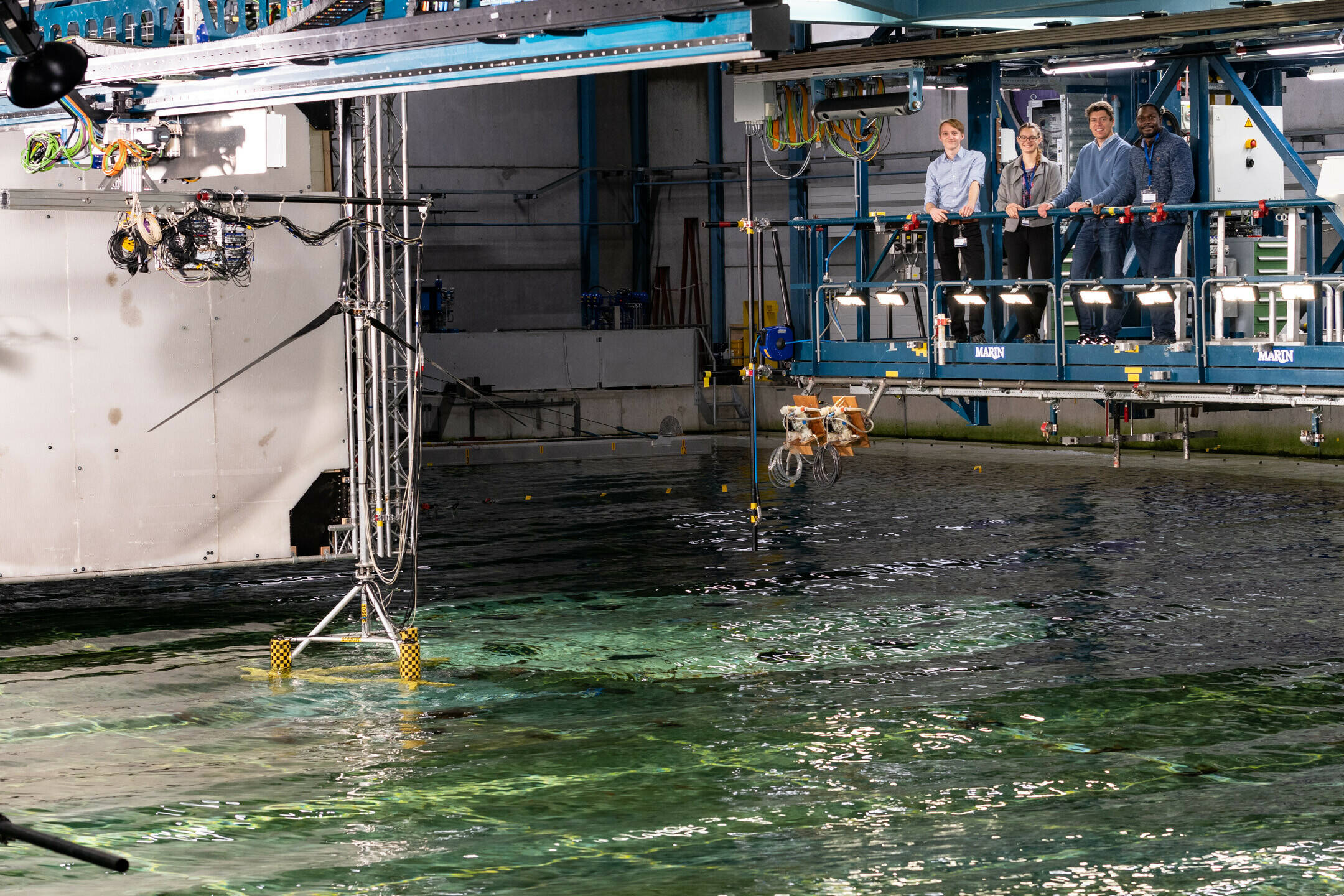
MARIN has been involved in floating wind turbines right from the start of their development and has seen models triple in size from 5MW to 15MW in just 10 years.
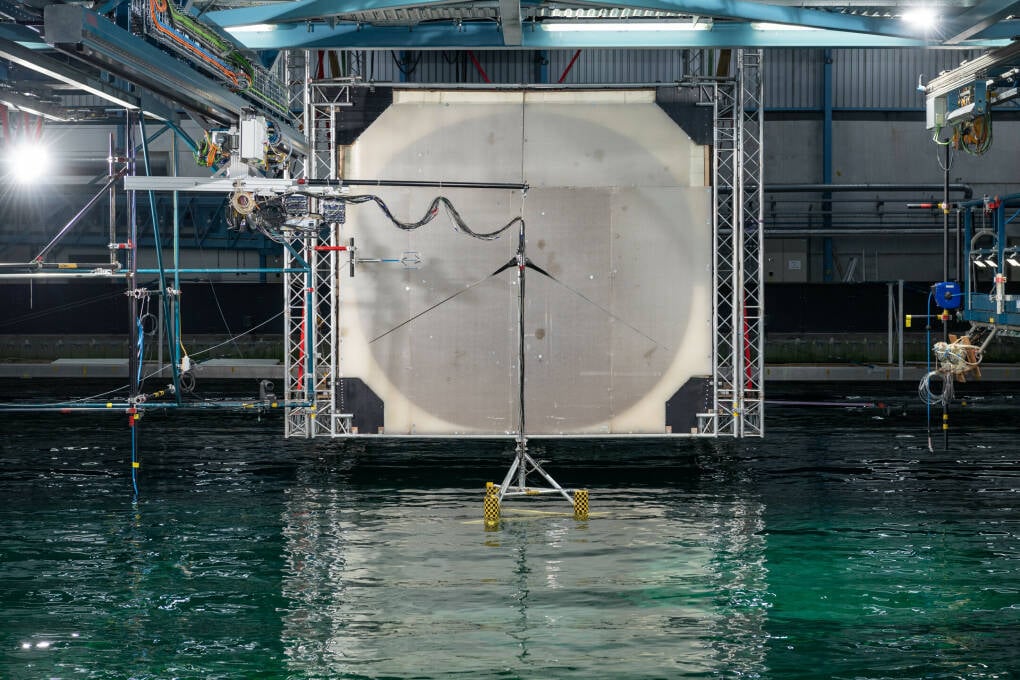
Figure 2. TLP hull and turbine in Wave Basin at 90-degree orientation.

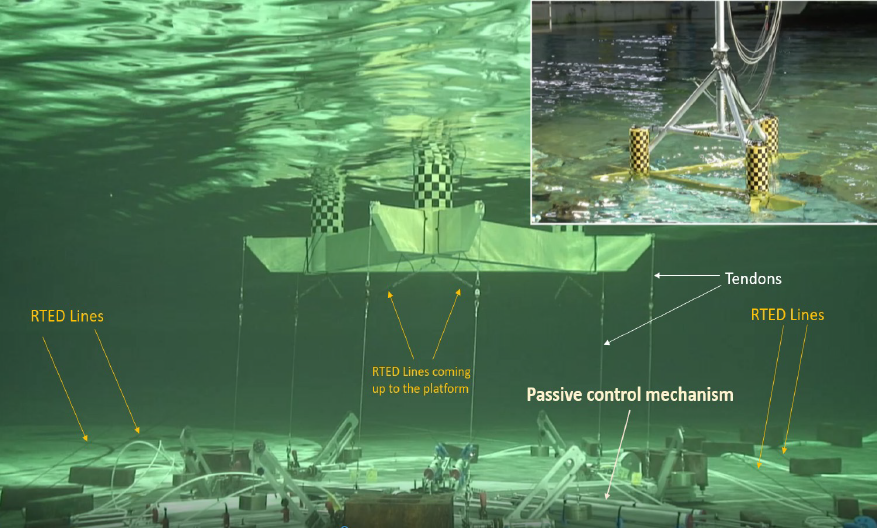
Figure 1. Underwater view and top view (insert) of TLP hull with RTED embodiment in the Wave Basin.
More info
15MW wind turbine model available for projects
The 5, 10 and 15MW stock wind turbines are all available for new projects, but the design approach MARIN took can also be used to make a project specific scaled-down rotor. Alternatively, other aerodynamic modelling approaches can be taken in the basin, in which the loads are applied using either winches or small ducted fans as actuators controlled by aerodynamic BEM models.
Being involved in the floating wind sector right from the early days, MARIN has built up two decades of knowledge and is able to provide a range of comprehensive solutions for floating turbine simulation methods to support its clients.
Figure 2. TLP hull and turbine in Wave Basin at 90-degree orientation.
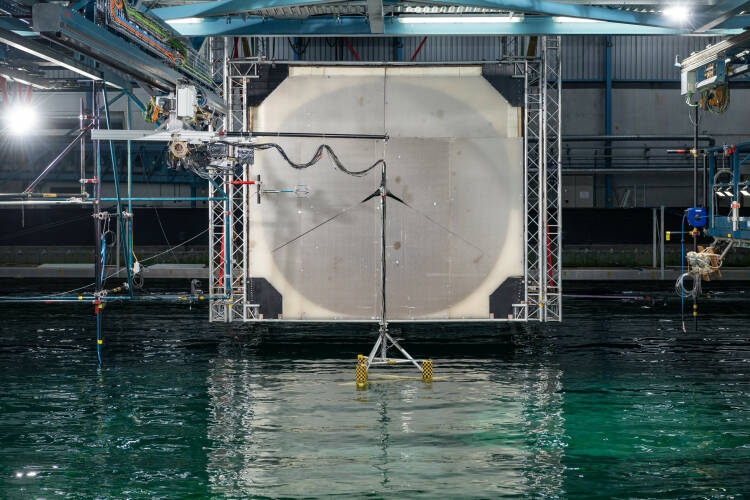
Within this project three floating wind platforms (two different semi-submersibles and one tension-leg platform (TLP) type) were tested. During these tests, NASA’s harmonic fluid damper technology that mitigates excessive dynamic motions of the platforms was tested in the basin.
In contrast to actively controlled systems, passively controlled dynamic systems have the advantage of not requiring a constant source of energy input to operate and can be designed to impact a broad range of frequencies. The basin tests were performed for a wide range of environmental conditions and the impact on floater motions were measured. Afterwards KENT determined the impact of the dampers on the fatigue loads, which ultimately reduced the cost of the complete FOWT system.
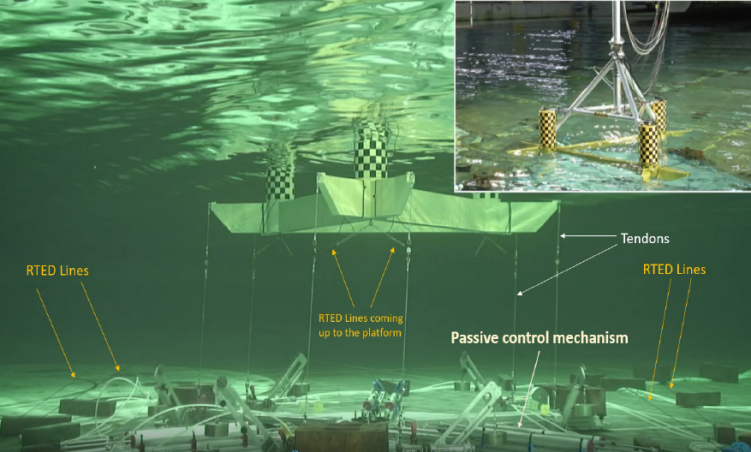
Figure 1. Underwater view and top view (insert) of TLP hull with RTED embodiment in the Wave Basin.

This improved method was then used to develop a generic model-scale wind turbine based on the NREL 5MW turbine. We incorporated an active blade pitch control to test different control systems in the basin. Later a larger rotor was designed around the DTU 10MW and in 2020, MARIN went on to develop a scaled down rotor based on the NREL 15MW reference wind turbine.
Atlantis programme
The new 15MW turbine was subsequently used to test different floating wind turbine concepts as part of a project within the Atlantis programme funded by the U.S. Department of Energy’s Advanced Research Projects Agency–Energy (ARPA-E). The consortium comprised KENT, the National Renewable Energy Laboratory (NREL), National Aeronautics and Space Administration (NASA), the American Bureau of Shipping (ABS) and MARIN.
The first floating project MARIN participated in was ‘Drijfwind’ in 2003 but this was limited to testing only the floater without the wind turbine to determine the global floater response in waves and current.
Then in a pioneering initiative in 2011, MARIN developed a new, high quality wind generation machine for its Offshore Basin which also gave the opportunity to model the wind turbine during tests. This involved a new performance scaling method for the rotor, which greatly improved the quality of model testing.
MARIN has been involved in floating wind turbines right from the start of their development and has seen models triple in size from 5MW to 15MW in just 10 years.
October2023, no. 137




Report








